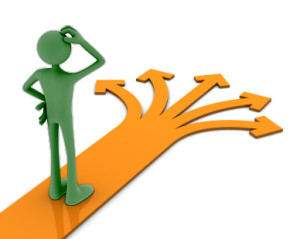 In any business, there are a lot of boxes that need to be checked: processing payroll, paying taxes, hiring staff. These are non-negotiable tasks.
In any business, there are a lot of boxes that need to be checked: processing payroll, paying taxes, hiring staff. These are non-negotiable tasks.
A content marketing plan has become almost non-negotiable in business. In 2014, 93% of marketers said they used content marketing. That’s a staggering number — but in order to implement an effective content marketing plan, you need to work on content mapping.
Content mapping is a methodical, strategic way to plan your content based on your audience personas and buying patterns. You can map content to each stage of the buying cycle, which provides direction and purpose when you develop your content.
Finding the Content Coordinates
Publishing effective content means posting the right content at the right time in front of the right audience. It sounds like a tall order, but research and planning will help you map out your content.
Make sure you thoroughly understand your audience persona (or personas) including their wants, needs, frustrations, goals, and priorities. When your persona is data-backed by market research, you’ll gain insight into the topics that are top of mind and the problems they are facing.
You also need to understand your audience’s buying behavior and mindset, including where they sit in the buying process. When you know how close a prospect is to making a purchase, you can customize content to speed up the process.
The cross section of these data points allows you to dial in on the exact type of content your prospect needs to see — almost like coordinates on a map. You’ll need to develop content for each part of the buying cycle, which can generally be organized into three stages.
Stage One: Attract
At the top of the funnel, your prospect is newly aware of their problem, or the fact that a solution could exist. You can leverage this opportunity to educate your prospects about the topic with high-level, broad content that addresses basic questions.
Develop content that will attract your target to your company, such as:
- Thought leadership
- Edutainment
- Provocative or amusing content
- Research
Stage Two: Engage
In the middle of the funnel, your audience is aware of the problem and likely feeling the associated pain or inconvenience. At this stage, anticipate and answer questions related to your company or product, and show how you can solve their problem. This showcases your knowledge, experience, and utility and puts you on their radar as a potential solution. Remember, your prospect is still evaluating options so don’t release your heavy sales content just yet.
Content at the engagement level should be helpful and useful, as well as educational:
- Best practices
- Case studies
- Lists of tips (ie. top ten)
- Demo videos
Stage Three: Convert
At the bottom of the funnel, your prospects are ready to make a purchase — and if you’ve mapped out your content successfully, they may be considering your company or product. As your target weighs out the pros and cons of your product and compares you to competing options, your content should focus specifically on the value of your product and aim for a sales conversion.
Content at this stage should convince your prospect that you’re the best option:
- Testimonials/client success stories
- Product/company comparisons (us vs. them)
Remember, it’s crucial at this stage to include calls to action in your content. Figure out how your prospects like to take the next step — whether it’s a form, buy button, phone number, or something else — and make it easy for them to take action.
Content Marketing with a Roadmap
Content mapping, like a lot of strategy work, is the key to successful content marketing. Without a strategy, you risk losing clients because they see content that doesn’t meet them at the cross section of their problem awareness and buyer readiness.
Ready to tackle content mapping for your company? Download a printable version of these tips and steps to help you with your content mapping.
